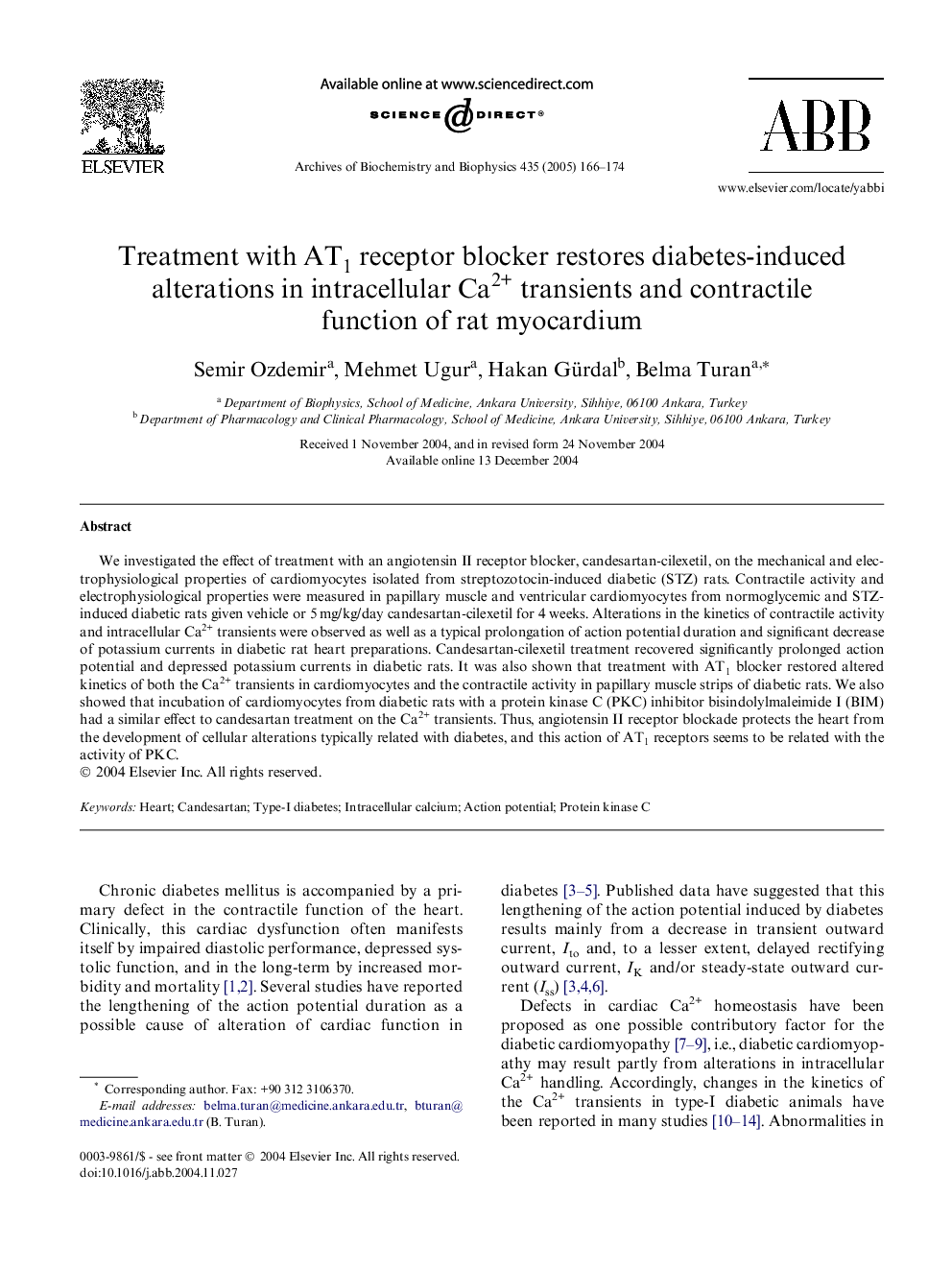| Article ID | Journal | Published Year | Pages | File Type |
|---|---|---|---|---|
| 9882318 | Archives of Biochemistry and Biophysics | 2005 | 9 Pages |
Abstract
We investigated the effect of treatment with an angiotensin II receptor blocker, candesartan-cilexetil, on the mechanical and electrophysiological properties of cardiomyocytes isolated from streptozotocin-induced diabetic (STZ) rats. Contractile activity and electrophysiological properties were measured in papillary muscle and ventricular cardiomyocytes from normoglycemic and STZ-induced diabetic rats given vehicle or 5Â mg/kg/day candesartan-cilexetil for 4 weeks. Alterations in the kinetics of contractile activity and intracellular Ca2+ transients were observed as well as a typical prolongation of action potential duration and significant decrease of potassium currents in diabetic rat heart preparations. Candesartan-cilexetil treatment recovered significantly prolonged action potential and depressed potassium currents in diabetic rats. It was also shown that treatment with AT1 blocker restored altered kinetics of both the Ca2+ transients in cardiomyocytes and the contractile activity in papillary muscle strips of diabetic rats. We also showed that incubation of cardiomyocytes from diabetic rats with a protein kinase C (PKC) inhibitor bisindolylmaleimide I (BIM) had a similar effect to candesartan treatment on the Ca2+ transients. Thus, angiotensin II receptor blockade protects the heart from the development of cellular alterations typically related with diabetes, and this action of AT1 receptors seems to be related with the activity of PKC.
Related Topics
Life Sciences
Biochemistry, Genetics and Molecular Biology
Biochemistry
Authors
Semir Ozdemir, Mehmet Ugur, Hakan Gürdal, Belma Turan,
